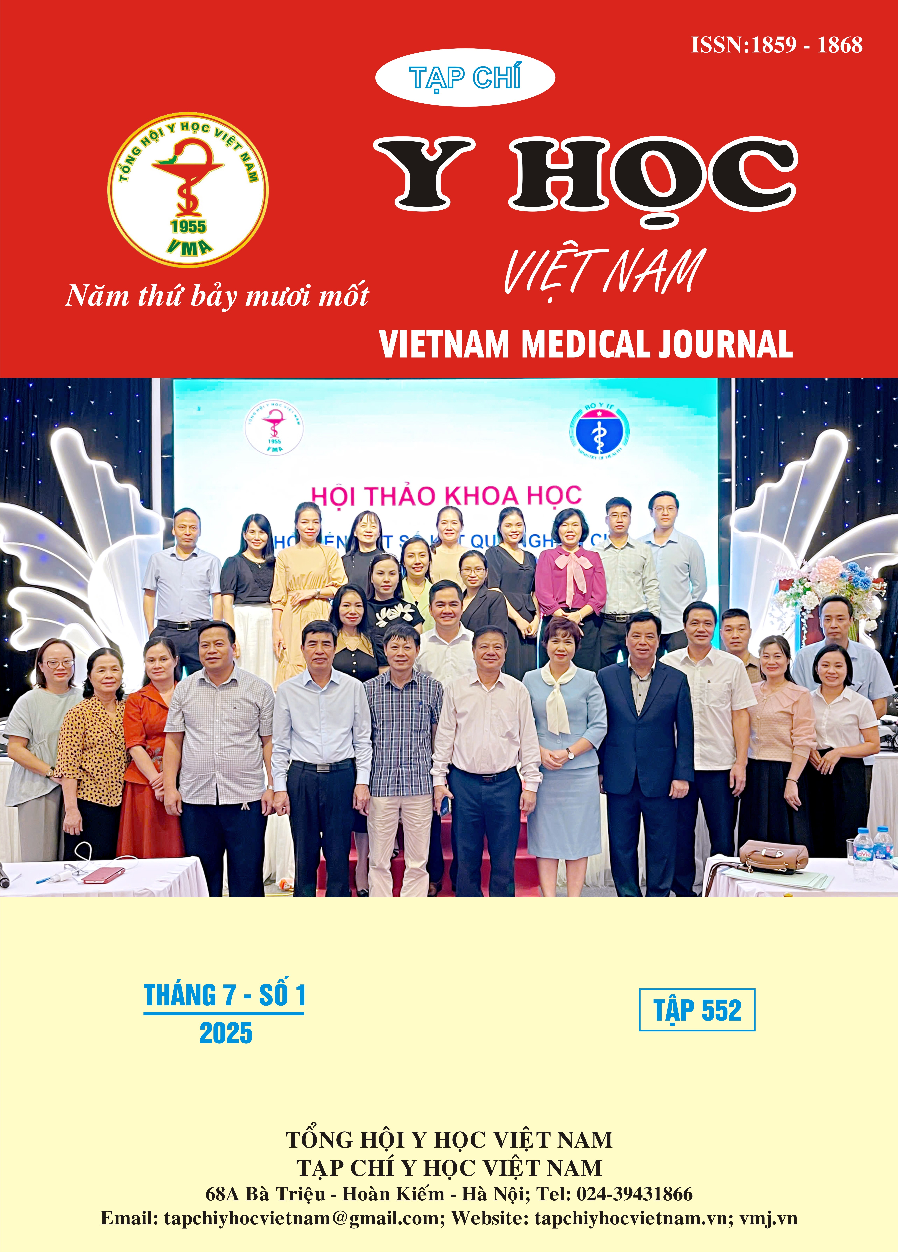ĐÁNH GIÁ KẾT QUẢ PHẪU THUẬT LÓT SÀN HỐC MẮT BẰNG LƯỚI TITANIUM TRONG ĐIỀU TRỊ GÃY SÀN HỐC MẮT
Nội dung chính của bài viết
Tóm tắt
Mục tiêu: Đánh giá tính hiệu quả và độ an toàn của phẫu thuật lót sàn hốc mắt bằng lưới Titanium trong điều trị gãy sàn hốc mắt. Thiết kế nghiên cứu: Nghiên cứu tiến cứu, can thiệp lâm sàng hàng loạt ca không có nhóm chứng. Phương pháp nghiên cứu: mô tả và phân tích 75 trường hợp gãy sàn hốc mắt được phẫu thuật lót sàn bằng lưới Titanium từ tháng 9/2017 đến tháng 3/2019. Kết quả: Tuổi trung bình của mẫu nghiên cứu là 36,1 ± 12,3 tuổi. Nam giới gấp 2 lần nữ giới (66,7% và 33,3%). Đa số chấn thương do tai nạn giao thông 68%. Thời gian từ lúc chấn thương đến lúc phẫu thuật trung bình là 4,3 tuần. Có 34 (45,3%) trường hợp gãy sàn đơn thuần và 41(54,7%) gãy sàn phối hợp. Sau 6 tháng theo dõi, tỷ lệ khỏi mắt thụt là 67,3%; mắt thấp là 68,9%, song thị là 74,2%; hạn chế vận nhãn lên và xuống lần lượt là 75% và 77,8%. Có 1,3% trường hợp tê theo sự chi phối thần kinh dưới hốc, 4% nhãn cầu cao, 1,3% lật mi và sẹo. Kết luận: Phẫu thuật lót sàn bằng lưới Titanium có tính an toàn cao, giúp phục hồi vị trí nhãn cầu, vận nhãn và tính thẩm mỹ của người bệnh.
Chi tiết bài viết
Từ khóa
gãy sàn hốc mắt, lưới Titanium
Tài liệu tham khảo
2. Trần Kế Tổ, Lê Minh Thông (2009), "Đánh giá hiệu quả hồi phục vận nhãn ban đầu của phẫu thuật lót sàn đơn thuần trong điều trị gãy sàn hốc mắt có tổn thương cơ trực dưới", Y Học Thực Thành, 11 (687), trang 23-7.
3. Al-Khdhairi Omar Bakr Hazm, Abdulrazaq Saif Saadedeen (2017), "Is Orbital Floor Reconstruction With Titanium Mesh Safe?", Journal of Craniofacial Surgery, 28 (7), e692-e694.
4. Gabrielli Mario Francisco, Monnazzi Marcelo Silva, Passeri Luis Augusto, et al. (2011), "Orbital wall reconstruction with titanium mesh: retrospective study of 24 patients", Craniomaxillofacial trauma & reconstruction, 4 (3), 151.
5. Gosau Martin, Schöneich Moritz, Draenert Florian G, et al. (2011), "Retrospective analysis of orbital floor fractures—complications, outcome, and review of literature", Clinical oral investigations, 15 (3), 305-313.
6. Hossal Banu M, Beatty Randall L (2002), "Diplopia and enophthalmos after surgical repair of blowout fracture", Orbit, 21 (1), 27-33.
7. Jung Hye Na, Suh Sang-il, Kim Hyung-Jin, et al. (2018), "Comparison of clinicoradiological findings between patients with recovering diplopia and those with residual diplopia after surgery for pure orbital blowout fracture", Journal of Cranio-Maxillofacial Surgery, 46 (3), 375-380.
8. Lee Sang Hun, Lew Helen, Yun Young Soo (2005), "Ocular motility disturbances in orbital wall fracture patients", Yonsei medical journal, 46 (3), 359-367.
9. Ludwig Irene H, Brown Mark S (2002), "Flap tear of rectus muscles: an underlying cause of strabismus after orbital trauma", Ophthalmic Plastic & Reconstructive Surgery, 18 (6), 443-450.
10. Morrison Archie D, Sanderson R Christopher, Moos Khursheed F (1995), "The use of silastic as an orbital implant for reconstruction of orbital wall defects: review of 311 cases treated over 20 years", Journal of oral and maxillofacial surgery, 53 (4), 412-417.


